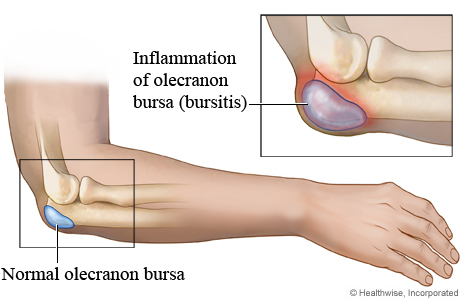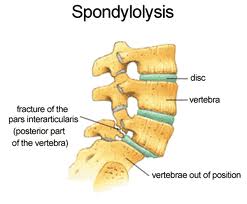Treatment of Adductor-Related Longstanding Groin Pain: 
Longstanding adductor-related groin pain is localized medially in the groin and may radiate down along the adductor muscles. The key examination features that distinguish this clinical entity from others are maximal tenderness at the adductor tendon insertion and pain with resisted adduction. Weakness of the adductor muscles is common and palpation of the adductors reveals generally increased muscle tone with trigger points along the adductor longus. The pubic symphysis is frequently tender but this does not help to differentiate the four clinical entities.
Occasionally there may be an obvious adductor tendinopathy or enthesopathy with localized tenderness, pain, and weakness on contraction, especially eccentric contraction, and a typical appearance of tendinopathy on ultrasound or MRI examination. More frequently there is no specific tendinopathy present.
Signs and Symptoms of Groin Pain
Unfortunately most patients with adductor-related groin pain continue to train and play until pain prevents them from running. When the condition has reached that stage, a lengthy period of rest and rehabilitation is usually required. However, if early warning signs are heeded, appropriate measures may prevent the development of the full blown syndrome. These early clinical warning signs are (from most common to least):
- Tightness/stiffness during or after activity with nil (or temporary only) relief from stretching
- Loss of acceleration
- Loss of maximal sprinting speed
- Loss of distance with long kick on run
- Vague discomfort with deceleration.
Treatment of Groin Pain
Traditional treatment for most types of groin pain was ‘rest’ but this most often resulted in a return of symptoms on resumption of activity. Compared with rest and passive electrotherapy, active rehabilitation provides more than 10 times the likelihood of pain-free successful return to sport. Thus, we outline a treatment protocol that combines experience and evidence from leading clinical centers. Five basic principles underpin a treatment regimen:
- Ensure that exercise is performed without pain.
- Identify and reduce the sources of increased load on the pelvis.
- Improve lumbopelvic stability.
- Strengthen local musculature using proven protocols.
- Progress the patient’s level of activity on the basis of regular clinical assessment.
These are outlined below.
1. Ensure that exercise is performed without pain
The first and most important step is for the patient to cease training and playing in pain. Pain-free exercise is absolutely crucial for this rehabilitation program. If pain is experienced during any of the rehabilitation activities, or after them, that activity should be reduced or ceased altogether. Experienced clinicians use absence of pain on the key provocation tests (e.g. squeeze test and Thomas test) as a guide to progress the rehabilitation program and minimize the mechanical stress on injured tissues.
2. Identify and reduce the sources of increased load on the pelvis
As discussed previously, it is essential to identify and reduce the sources of increased load on the pubic bones. This may involve:
- Reducing adductor muscle tone and guarding with soft tissue treatment and/or dry needling
- Correcting iliopsoas muscle shortening with local soft tissue treatment, neural stretching and mobilization of upper lumbar intervertebral joints
- Reducing glutens medius muscle tone and myofascial shortening with soft tissue treatment and/or dry needling
- Identifying and correcting any hip joint abnormality
- Mobilizing stiff intervertebral segments
- Improving core stability, especially activation of transversus abdominis and anterior pelvic floor muscles.
3. Improve lumbopelvic stability
Research has demonstrated a delayed onset of action of transversus abdominis activity in patients with longstanding groin pain, suggesting that impaired core or lumbopelvic stability plays a role in the development of this condition.
4. Strengthen local musculature using proven protocols
Once pain has settled and muscle shortening has been corrected in the adductor, iliopsoas and gluteal muscles, then a graduated pain-free muscle strengthening program can be commenced. A similar pre-season adductor muscle strengthening program reduced the incidence of adductor muscle strains in ice hockey players who were identified as at risk.
5. Progress the patient’s level of activity on the basis of regular clinical assessment
The aim of the graded exercise program is to gradually increase the load on the pubic bones and surrounding tissues. Once the patient is pain-free, pain-free walking can begin and be gradually increased in speed and distance. The criteria for when the patient may return to running are when:
- Brisk walking is pain-free
- Resisted hip flexion in the Thomas position is pain-free
- There is no ‘crossover’ sign
- There is minimal adductor guarding.
Other non-surgical treatments
- Compression shorts have been advocated for those with mild pain who insist on continuing to train and play, and for those returning to sport after rehabilitation.
- The shorts substantially reduced pain when worn during exercise.
- The mechanism of action of compression shorts remains unclear, but Dutch researchers have reported that groin pain on resisted adduction (the ‘squeeze test’) was significantly reduced by the application of a pelvic belt.
- They speculated that relative pelvic instability may contribute to the groin pain typically attributed to tendinopathy.
Groin Pain is very common among athletes. A significant cause of long-standing issues is adductor-related groin discomfort. Alliance Rehab and Physical Therapy provide 24/7 access to online appointments. If you are suffering from Groin Pain then Contact us at our website or Call us at: 703-750-1204
http://www.alliancephysicaltherapyva.com









